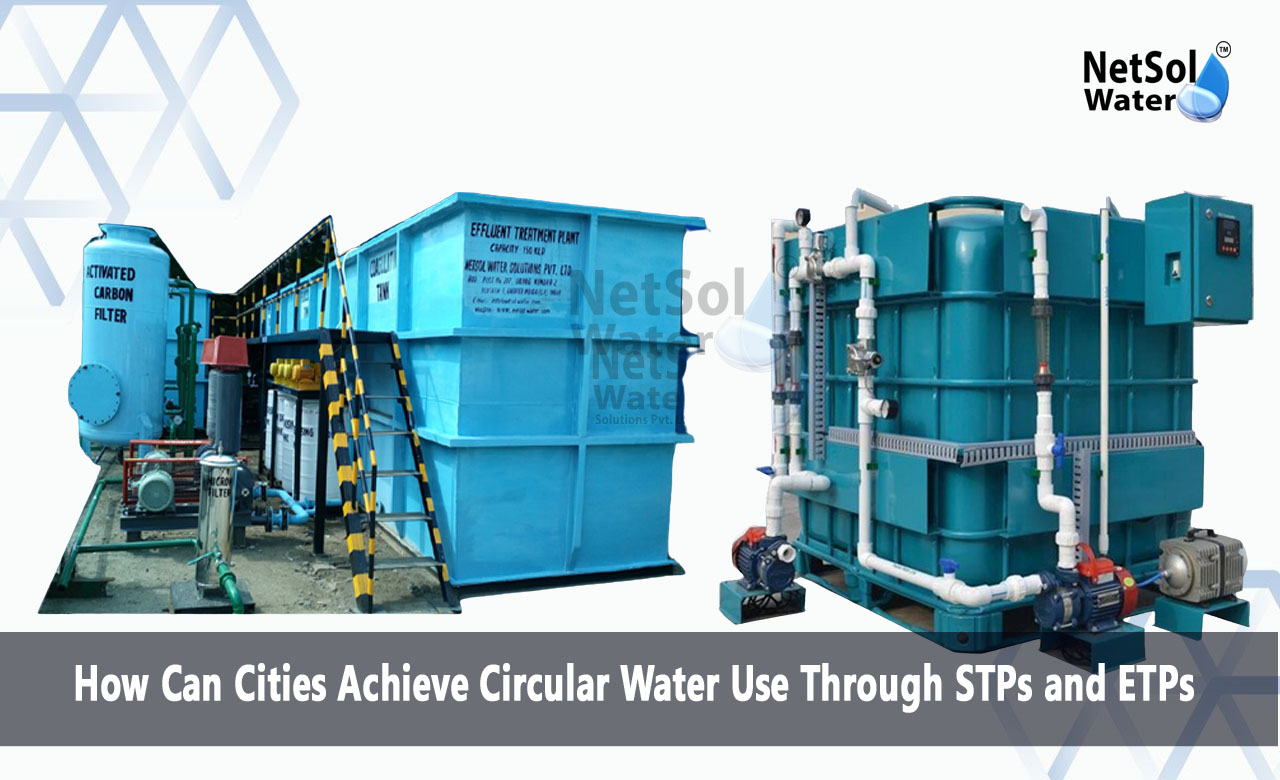How Can Cities Achieve Circular Water Use Through STPs and ETPs?
Water shapes life and drives human growth. Cities face growing water stress and this stress grows as populations rise. It also grows as the climate shifts. Urban areas need new methods for water use. Circular water through STPs and ETPs offers a clear path. This approach treats water and then returns it for use. It cuts waste and restores natural flows. It protects health and supports urban economies. We will explain how cities can adopt circular water use through STPs and ETPs.
Sewage Treatment Plants (STPs)
Urban sewage marks a major water risk. Cities must treat this flow before reuse. Let us have a look at some core STP stages.
Primary Treatment
This stage removes large solids by screening. It holds water in tanks to let sediments settle. Workers remove the settled sludge by simple means. This step readies water for deeper cleaning.
Secondary Treatment
This stage uses microbes to eat organic matter in water. It runs in aerated tanks that feed life. Clean water moves on while microbes form sludge. Operators separate the sludge for safe handling.
Tertiary Treatment
This stage polishes water to high clarity. It filters out fine particles and removes nutrients. It may use sand beds or membranes without chemicals. At this point water meets reuse standards.
Read: Sewage Treatment Plant Manufacturer
Effluent Treatment Plants (ETPs)
Industries pour polluted water into urban streams. Cities must tame these flows for safe discharge and reuse. Let us have a look at some key ETP components.
Source Segregation
Factories must collect oily and chemical effluent separately. This step keeps harmful flows apart. It makes each stream easier to treat.
Treatment Stages
This process passes water through physical traps, then biological digesters. It then moves to chemical reactors when needed. Each tank cuts a group of pollutants. Workers test water at each stage.
Effluent Reuse
Treated water can cool machines or wash floors in factories. It can flush toilets in offices. It can irrigate green spaces. Each use cuts demand on clean freshwater.
Read: Effluent Treatment Plant Manufacturer
Integration in Urban Planning
Effective reuse needs more than treatment plants alone. Cities must plan systems from the start. Let us have a look at some planning needs.
Policy Support
Leaders must set clear rules to guide water reuse. They must also offer fair fees and incentives. These steps drive investments in STPs and ETPs.
Infrastructure Design
Engineers must link sewers and pipes to treatment plants. They must map flows to avoid leaks and blockages. They must ensure pumps and sensors run without fail.
Community Engagement
Citizens must know why water reuse matters. Schools and community centres can share clear guides. Public tours of plants build trust. Engaged people will back new projects.
Benefits and Challenges
Cities see new gains when they close water loops. They also face hurdles that need care. Let us have a look at some benefits and challenges.
Environmental Benefits
Reusing water cuts river and lake pollution. It also keeps aquifers from dropping too fast. Urban green spaces stay lush with safe recycled water.
Economic Benefits
Circular water use lowers bills for industries and homes. It delays the need for costly new dams and pipelines. It also creates jobs in plant operations and repair.
Operational Challenges
Plants need trained staff to run each stage. They need stable power and clear maintenance plans. They must handle spikes in waste flows when rains pour.
Conclusion
Cities can shift to circular water use through STPs and ETPs with clear plans. This circular water use through STPs and ETPs will cut waste and protect resources. It will also boost healthy living and growth. If you want to learn more about circular water use through STPs and ETPs please get in touch today. Contact us now to request a consultation or more information.
Contact Netsol Water at:
Phone: +91-9650608473, Email: enquiry@netsolwater.com



